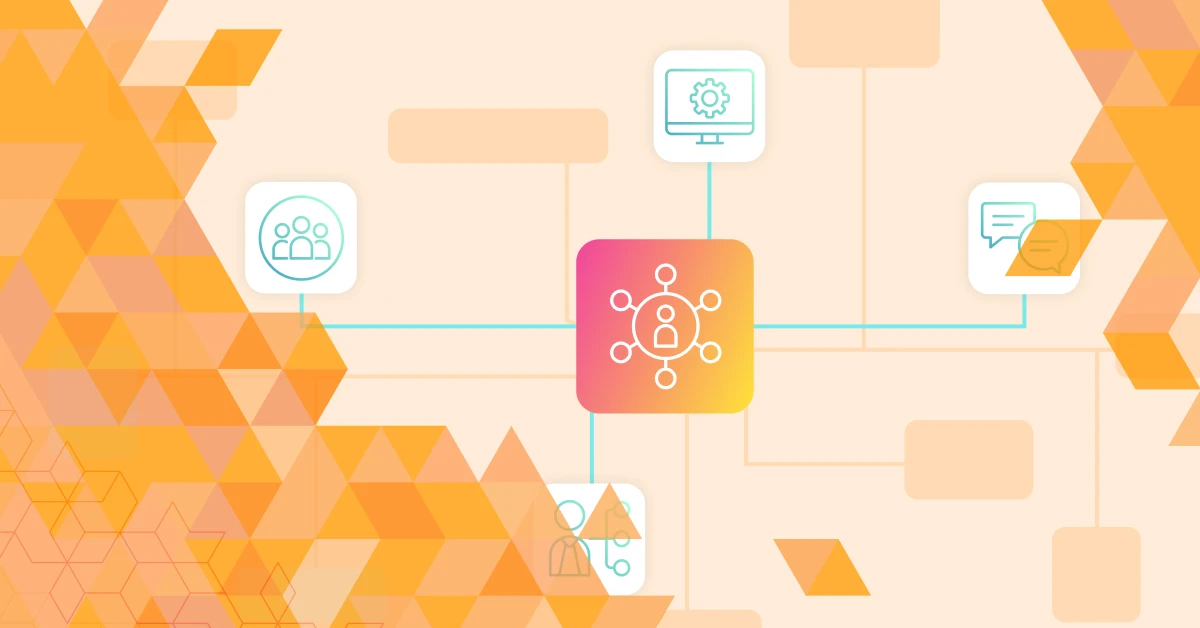Construction is booming around the world. But it’s also an industry that has always had to contend with elevated risks and had higher-than-average injuries and fatalities due to the nature of the work. But workplace safety software can help companies manage risks, reduce incidents, and establish a culture of safety.
Learn how to create an effective internal communication strategy at your organization.
What is Workplace Safety Management Software?
Workplace safety software centralizes and automates all of the information regarding health and safety information in a company.
Often, workplace health and safety management software will have a mobile component so every employee can easily access safety information from their smartphone, a critical element in industries (like construction) with frontline workers who don’t have a desk or computer.
Safety management software enables:
- Incident reporting from any device
- Data and analytics information for real-time incident and safety tracking
- Safety training
- Archive of inspection information
- A centralized library of safety processes and procedures
- Better safety compliance with internal, state, and federal regulations
Workplace health and safety management software is more than just for physical injuries.
- It can also help companies ensure the emotional well-being of their teams or be a tool used to share critical information during incidents like the COVID-19 pandemic to keep workers healthy.
- It’s also a space to promote workplace wellness and implement programs that support a healthy, mindful organization.
- Workplace safety inspection software can consolidate and archive all inspections to track the upkeep of equipment and facilities.
If you lead by example and establish a culture of safety, your employees will listen. Edelman’s 2022 Trust Barometer found that more people trust information coming from their employer than any other source. Workplace safety management software provides an opportunity to build on that trust.
Benefits Of Implementing A Workplace Safety And Security Software
There’s a heightened awareness of workplace safety these days. The COVID-19 pandemic made every employer keenly aware that keeping their employees healthy and safe must be a top priority.
In the United States alone, companies spend $1 billion every week on serious, non-fatal injuries. As companies accelerated their digital transformation these past few years, it set the stage for implementing a digital safety solution.
Here are a few of the top benefits of workplace safety software.
Employee Training Management
A major part of any safety program is having well-trained staff. Whether it’s how to operate equipment or how to perform a task, employers need to make sure everyone has the skills and information they need to perform their jobs. Workplace safety apps can double as training tools. Whether it’s a step-by-step tutorial or a video, companies can deliver safety over the platform. The training and knowledge of how to react in situations will better equip workers to be more confident in their jobs.
Streamlined Safety Processes
Before the digital age, paperwork made it hard to accurately track safety information and manage incident reporting or know when a piece of equipment was last inspected. Workplace safety and security software centralizes safety information and streamlines associated processes.
For instance, with a safety app, incident reporting happens all in one place and can be sent to multiple recipients immediately. Every incident follows the same protocols and moves through a checklist of response actions for organizational consistency.
Real-Time Insights
Remember those signs on construction sites or factory floors that said “0 Days Since the Last Accident?” It was a running tally of how long the company had gone without a safety incident.
Now, safety management systems have an analytics dashboard to give real-time insights into incident reporting and safety protocols. It can help companies follow proper regulatory compliance (like OSHA rules). But companies can also use real-time insights to constantly improve processes to make them safer and enhance their risk management strategies. Data is a critical tool in business operations and it can be just as important for workplace safety.
Employee Reporting and Feedback
“If you see something, say something.” Having workplace safety software encourages communication and empowers workers to contribute to creating a better environment. Workers who are in the trenches and on site are the ones who have first-hand knowledge of potential risks or witness safety incidents. A mobile-first safety tool allows them to immediately send an alert or report an accident.
Increased Agility and Productivity
Having plans and protocols in place creates structure in an organization. It creates clarity on how to operate. When foundations are established and communicated, there is greater peace of mind and everyone is more confident to be more agile and innovative.
What To Look For In A Workplace Safety Management Software
In general, workplace software should all have the following attributes to deliver ROI to a company.
Mobile-First
In this day and age, workplace software should be a mobile-first platform. That means everyone can access it on their preferred personal device. In construction, a mobile-first solution gives workers access to critical safety information no matter where they are.
Ease Of Use and Easy Onboarding
To get buy-in for a new workplace tool, it needs to be user-friendly. People don’t want to be bogged down with long instructions and confusing apps. Make sure any workplace safety software has a UX interface that is intuitive and straightforward, and easy to join. It should also integrate with other platforms for a single sign-on.
Cloud-Based
It goes without saying that workplace safety management software should be a cloud-based platform. The real-time capabilities and bandwidth of a cloud solution is better than an on-premise one. It’s also a space that is easily accessed by everyone in an organization from any device.
Top Notch Security
Companies can sometimes make the mistake of trying to save a little money and use a social communication app to share information across their organization. But those tools are not designed with the features or security needed to deliver information at the scale a company needs. Digital business solutions, like workplace safety software, are built with the right security certifications in place to adhere to regulations and also protect users from data breaches.
Why Workplace Safety Software is Set to Be the Next Disruptor
Approximately 84% of construction workers who sustained head injuries weren’t wearing work safety gear at the time of their injury. And 50% of all fatal workplace falls occurred from altitudes of 25 feet or less due to poor fall protection. Personal protective equipment and fall protection is essential, but in the Information Age, more companies are looking at digital tools that can help prevent accidents before they happen and improve workplace safety.
Workplace safety is front and center and companies are looking for a way to make it a priority in their organization.
Consider the following ways workplace safety software can benefit your organization.
Improved Information Distribution
According to a study by the Center for Construction Research and Training, up to 27% of construction workers who sustained an occupational injury didn’t report their injury. Failing to report important safety information because your office is still relying on paperwork can increase hazards in your workplace.
Digital workplace software improves information distribution by providing automated alerts to workers, allowing follow-ups and updates, and ensuring routine communication, all on mobile. What’s more, it’s easier to send out alerts and notifications from a single software platform, thereby improving your manager’s leadership and the accountability of your workers.
Improved Data Analysis
Searching for correlations in data via paper records and spreadsheets is not only tiresome, but it’s not cost-efficient for any company. However, the analytics dashboard of a mobile collaboration platform can help users find correlations between data more efficiently. This saves time, and company money, and helps you as a business find the areas in safety culture where you need to improve.
Improved Safety Culture
It’s easy for a workplace not to take safety seriously until a fatal workplace accident occurs. Therefore, it’s essential that, as a leader, you make safety culture a priority. When the leader of the company sees safety culture as important, the rest of the workforce will follow.
Building a culture of safety is paramount to running a business these days. It impacts employee engagement, productivity, and overall business outcomes. Here are the ways safety software is set to disrupt the workplace and bring digital transformation to the next level.
Accidents happen in the construction industry. However, many of these accidents can be avoided by implementing a mobile tool to promote communication, workplace data analysis, and safety culture.
By implementing workplace safety software, you can monitor safety regulations, notify workers of safety concerns or issues, track inspections, and help your workers stay accountable for their own safety, as well as the safety of others.

About the author
Beekeeper
We make frontline lives easier, work safer, and teams more connected so businesses can reach new heights. At Beekeeper, we’re dedicated to making frontline lives easier by connecting workers with the tools, support, and information they need to feel valued, do their best work, and drive the business forward.








